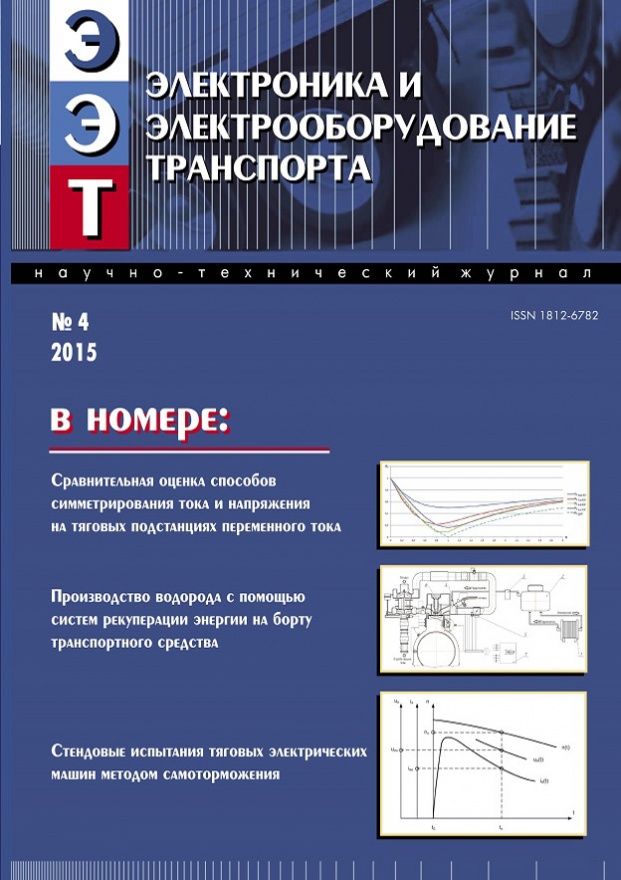
What's in the issue?
Power supply and electrical equipment
Comparative evaluation of current and voltage balancing methods at AC traction substations
Herman L. A., Novikov E. V., Kishkurno K. V., Petrov D. V. The article provides a comparative assessment of the use of three methods of current and voltage balancing using a symmetrical transformer and installations of longitudinal and transverse capacitive compensation. For comparison, graphs of current and voltage asymmetry are plotted. The advantages and disadvantages of each of the methods of symmetry are indicated. The high efficiency of reducing the voltage asymmetry on 27.5 kV tires by installing a longitudinal capacitive compensation included in the suction line of a traction substation is shown. Keywords: current and voltage symmetry, installation of longitudinal capacitive compensation, installation of transverse capacitive compensation, two-phase symmetrical transformer, comparative evaluation, efficiency.Detailing the structure of AC traction networks in the tasks of modeling and calculating the parameters of a short circuit loop
Bykadorov A. L., Zarutskaya T. A., Gavrilov I. V., Muratova-Milekhina A. S.Remote determination of the location of a short circuit in AC traction networks is an urgent, complex and not completely solved task. This is due to the diversity and heterogeneity of the elements forming the traction network. In this article, several variants of models compiled with different degrees of detail are considered for comparison, and the effect of detail on the resistivity of the traction network and the resistance of the short circuit loop is investigated. Analysis separately by active and inductive components, total resistance and phase angle, depending on the distance to the short circuit location, allows a deeper understanding of the cause of errors and inaccuracies in existing methods of remote determination of the short circuit location. The results obtained show that when solving problems related to determining the location of a short circuit, it is necessary to use models with more detail of the elements of the traction network than is customary today.
Keywords: short circuit, traction network, detailing, model, resistivity, ballast prism, deep earth, emergency mode parameters, improving the accuracy of calculations, modeling of electrical processes.